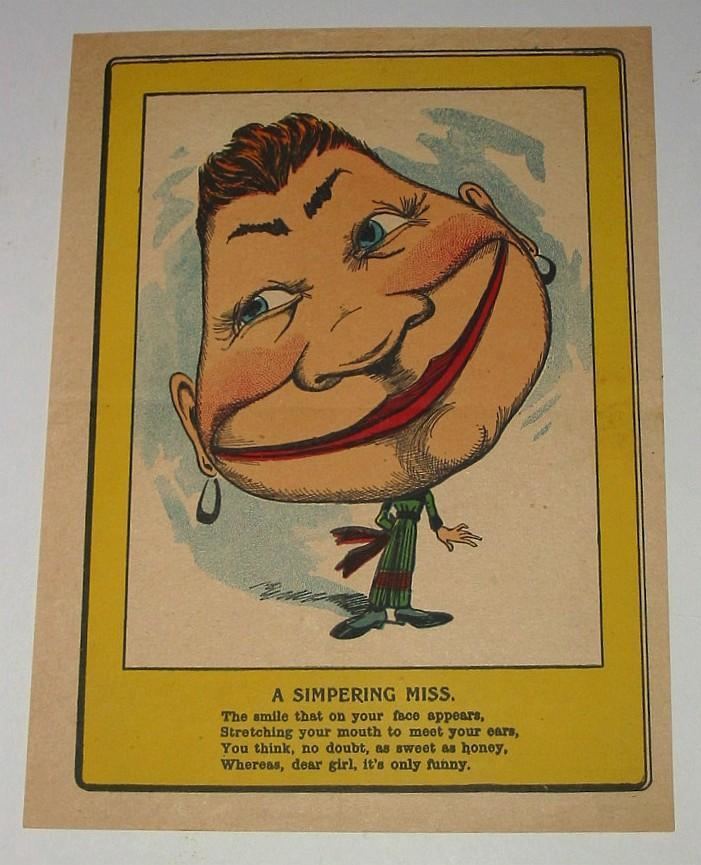 | ||
Vinegar valentines were a type of insulting cards. They are decorated with a caricature, and featured below an insulting poem. Ostensibly given on Valentine's Day, the caricature and poem is about the "type" that the recipient belongs to—spinster, floozy, dude, scholar, etc. They enjoyed popularity from the 1840s to the 1940s.
These cynical, sarcastic, often mean-spirited greeting cards were first produced in America as early as the 1840s by a variety of printing companies, including Elton, Fisher, Strong and Turner. By the 1870s, other entrepreneurs such as New York printer, John McLoughlin, and his cartoonist, Charles Howard were creating their own lines of cards. While different European companies also produced the humorous cards in the early 19th century, one of the most prestigious firms to create them around 1900 was Raphael Tuck & Sons, "Publishers to Their Majesties the King and Queen of England."
Cheaply made, vinegar valentines were usually printed on one side of a single sheet of paper and cost only a penny. Some people mistakenly call them penny dreadfuls, although that term in fact refers to a form of potboiler fiction. They often featured garish caricatures of men like the "Dude" or women like the "Floozy." One reason they rapidly became popular throughout America and Europe was because literacy rates were increasing at that time among the poor and working classes who rarely had much more than a penny to spend on such luxuries. But, according to noted valentine authority Nancy Rosin, president of the National Valentine Collectors Association, their use wasn't restricted to the lower economic classes.
The unflattering cards reportedly created a stir throughout all social levels, sometimes provoking fisticuffs and arguments. Ironically, the receiver, not the sender, was responsible for the cost of postage up until the 1840s. A person in those days paid for the privilege of being insulted by an often anonymous "admirer." Millions of vinegar valentines, with verses that insulted a person's looks, intelligence, or occupation, were sold between the 19th and 20th centuries. Art and design historian Annebella Pollen has extensively researched their production and reception in Britain, where they were more commonly called 'mock' or 'mocking' valentines. http://www.tandfonline.com/doi/pdf/10.1080/17460654.2014.924212
The cards are usually simply a sheet of thin, colored paper, about the size of a modern greeting card. They were later also produced in the form of postcards. They were usually sent anonymously. Postmasters sometimes confiscated these cards as unfit to be mailed.
At the end of the 1940s and 50s, the cost of the Vinegar Valentines was five cents.
The cards were first produced in the late Victorian era and enjoyed their greatest popularity in that period and in the first quarter of the 20th century.
One pop culture reference to vinegar valentines is found in Bill Watterson's Calvin and Hobbes comic strip. Calvin often gives Susie Derkins vinegar valentines.
